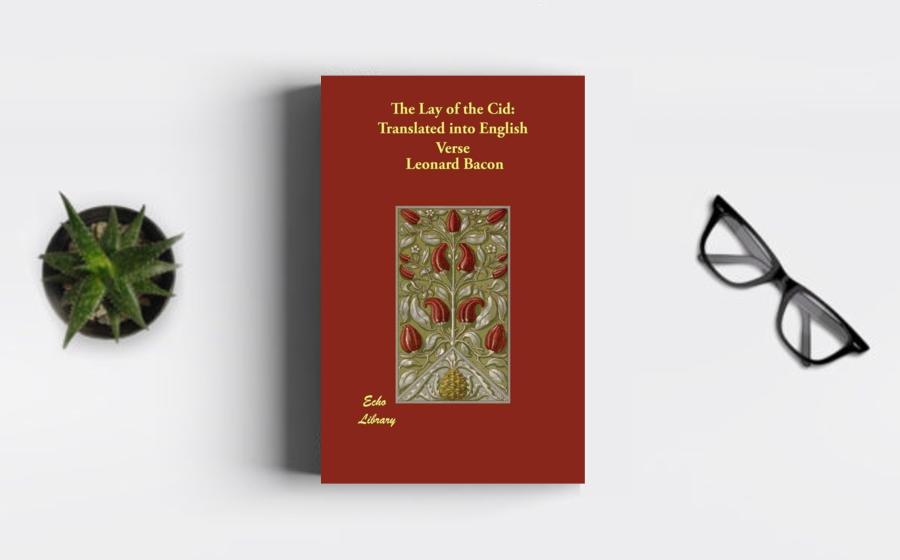"The Lay of the Cid," also known as "Cantar de Mio
Cid" or "The Poem of the Cid," is a timeless epic that
stands as one of the greatest achievements in medieval
Spanish literature. Composed in the 12th century, the
epic narrates the adventures, trials, and triumphs of
Rodrigo Diaz de Vivar, a nobleman and military leader
known as El Cid. The enduring appeal and time-tested
status of "The Lay of the Cid" lie in its compelling
portrayal of heroism, honor, and the complexities of
loyalty, making it a foundational work in the epic
tradition.
At its core, "The Lay of the Cid" is a
narrative poem that celebrates the exploits of El Cid, a
figure who looms large in Spanish history and folklore.
The epic is divided into three parts, each called a "cantar,"
and is written in a style that blends historical events
with poetic embellishments. The anonymous poet, often
referred to as the "Cantar de Mio Cid" author,
skillfully weaves together a narrative that captivates
readers with its vivid characters, dynamic storytelling,
and exploration of enduring themes.
One of the
key reasons "The Lay of the Cid" endures as an epic is
its portrayal of the heroic archetype in El Cid. Rodrigo
Diaz de Vivar is presented as the epitome of medieval
chivalry - a courageous and virtuous warrior who
embodies the values of honor, loyalty, and prowess in
battle. His character resonates across centuries,
standing as a symbol of resilience and virtue in the
face of adversity. El Cid's unwavering commitment to his
honor, even when faced with exile and betrayal,
establishes him as a timeless hero whose virtues
continue to inspire audiences.
The epic's
exploration of honor becomes a central theme that adds
depth to its time-tested appeal. El Cid's exile from his
homeland, sparked by accusations and political
machinations, presents a compelling examination of the
complexities of honor in a medieval context. The epic
grapples with questions of personal integrity,
reputation, and the significance of honor in a society
driven by feudal codes. Readers are drawn into the moral
dilemmas faced by El Cid as he navigates the challenges
of maintaining his honor while navigating the
treacherous political landscape of medieval Spain.
"The Lay of the Cid" also endures as a classic due
to its nuanced depiction of relationships, particularly
the bond between El Cid and his wife, Dona Ximena. The
epic explores themes of loyalty and love, revealing the
emotional depth of El Cid's character. The portrayal of
Dona Ximena's unwavering faith in her husband, even
during his exile, adds a layer of humanity to the epic,
making it relatable across cultures and time periods.
The enduring nature of love, loyalty, and the
complexities of human relationships contribute to the
universal resonance of the epic.
The epic's
portrayal of medieval warfare and politics further
solidifies its time-tested status. The battles, sieges,
and strategic maneuvering depicted in "The Lay of the
Cid" provide a vivid snapshot of the military and
political landscape of medieval Spain. The epic captures
the intricacies of medieval warfare, the role of honor
in military endeavors, and the clash of competing
factions. This historical context not only enriches the
narrative but also offers readers a window into the
complexities of medieval society.
"The Lay of the
Cid" is also distinguished by its oral tradition, a
characteristic that contributes to its enduring appeal.
Originally recited and transmitted orally by minstrels
or juglares, the epic's rhythmic and lyrical qualities
made it well-suited for memorization and performance.
The oral tradition allowed "The Lay of the Cid" to be
shared and preserved across generations, contributing to
its longevity as a cultural and literary treasure.
Furthermore, the epic's rich poetic language and use
of traditional Spanish forms contribute to its enduring
charm. The "cuaderna via" verse, a medieval poetic form
characterized by four-line stanzas and a strict syllabic
count, gives the epic a distinctive rhythm and
musicality. The poetic craftsmanship of "The Lay of the
Cid" elevates it beyond a mere historical account,
transforming it into a work of literary art that
continues to captivate readers with its linguistic
beauty.
"The Lay of the Cid" also serves as a
cultural touchstone for Spanish identity. The epic has
become a foundational text in Spanish literature,
contributing to the formation of a national literary
canon. Its influence extends beyond literature,
permeating Spanish culture and inspiring adaptations in
various art forms. The enduring presence of El Cid in
Spanish folklore, history, and popular culture
underscores the epic's lasting impact on the collective
imagination of the Spanish-speaking world.
"The Lay of the Cid" stands as a time-tested epic that continues to captivate readers with its portrayal of heroism, honor, and the complexities of medieval society. The enduring appeal of El Cid's character, the exploration of timeless themes such as honor and loyalty, the nuanced depiction of relationships, and the epic's historical and cultural significance all contribute to its status as a classic.






